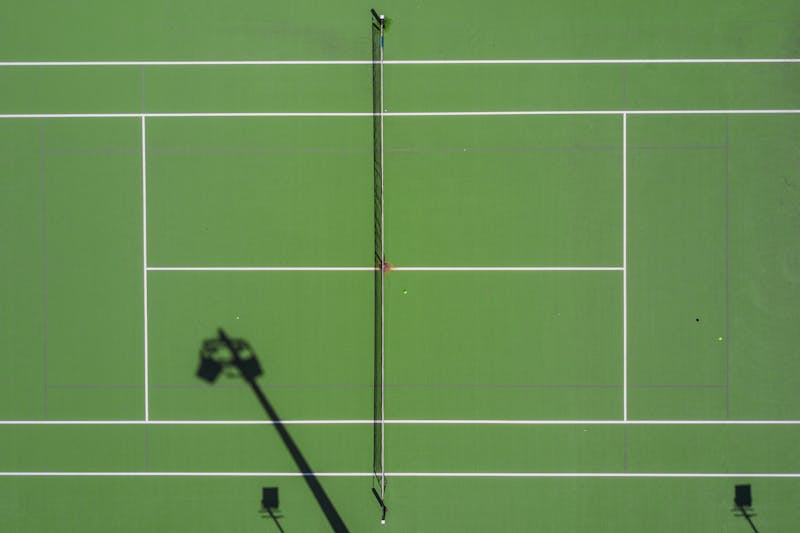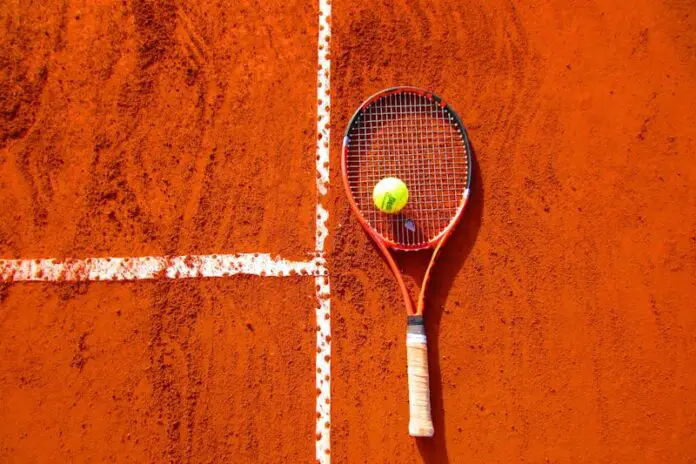Building a tennis court at home requires space and a significant investment. Planning includes selecting the right surface, orientation, and fencing.
Constructing a tennis court in your backyard is a dream for many tennis enthusiasts. It adds value to your property and provides a convenient space for practice, leisure, and hosting games. Before starting this project, you need to consider local zoning laws, available space, ground leveling, and proper drainage.
Choosing the correct type of court surface—be it grass, clay, or hard court—will affect the playing characteristics and maintenance requirements. The orientation of the court should minimize sun glare and wind impact, while fencing is essential for privacy and keeping balls within the play area. With meticulous planning and professional guidance, a home tennis court can be a rewarding addition for any sports-loving homeowner.
Introduction To Home Tennis Court Construction
Building a tennis court at home can bring numerous advantages. It offers a convenient way to stay fit and improve your game. With a personal tennis court, you can play anytime without waiting for a free court. It also allows for private lessons and practice sessions. Family and friends can enjoy the court, too. It’s a fantastic way to spend time together and stay active.
Before starting construction, several key considerations must be addressed. The size of your property will determine if a court can be built. Local zoning laws may affect construction. The orientation of the court is crucial to avoid the sun’s glare. The type of surface will impact play and maintenance costs. Ensure your plan for adequate drainage to prevent water damage. Lastly, consider the overall cost, which includes materials, labor, and long-term upkeep.
Choosing The Right Location
Building a tennis court at home requires thoughtful planning. Choosing the right location is crucial for the best playing experience. A tennis court needs a large flat area. Ideally, the space should be 60 feet by 120 feet. This ensures enough room for the court and out-of-bounds space.

The court should be placed in a north-south orientation. This minimizes sun glare during play. Consult with local authorities to understand zoning laws. They can affect where you can build on your property.
| Aspect | Consideration |
| Space | Minimum of 60×120 feet |
| Orientation | North-South to avoid sun interference |
| Zoning Laws | Check with local authorities |
Selecting Surface Materials
Deciding on the right surface material for a home tennis court is key. Grass courts offer a traditional feel but need lots of care. Their soft surface can be gentle on the body. Clay courts slow down the ball and are easier on the legs. Yet, they demand daily maintenance. Hard courts are durable and need less upkeep.
| Surface Type | Cost | Maintenance |
| Grass | High | Frequent |
| Clay | Medium | Daily |
| Hard | Varies | Low |
Each type impacts your game and wallet differently. Choose one that fits your play style and budget. Remember, upkeep is a long-term commitment. Think about this before making a choice.
Design And Customization
Designing your tennis court should reflect your unique style. Choose colors that match your home or favorite team. You can add logos or personal designs too.
Functional additions enhance your playing experience. Consider high-quality lighting for night matches. A rebound wall for solo practice is useful. Add seating for spectators to enjoy the game.
The Construction Process
The process of building a tennis court at home starts with preparation and excavation. Proper ground assessment is vital to ensure a solid foundation. Experts mark the boundaries and remove any debris. The ground is then leveled, and a sub-base material is laid to support the surface.
Surface installation follows, with choices ranging from clay to concrete. The chosen material affects the court’s speed and maintenance. Installation precision is key for a flat and playable surface.
Last comes the fencing and net setup. Fences are installed for safety and to keep the balls within the court. A high-quality net is mounted at the correct height to meet regulation standards.
Maintenance For Longevity
Regular cleaning keeps your tennis court in top shape. Sweep leaves and debris away every week. A gentle wash with water and a mild detergent helps too. This prevents mold and mild stains. Ensure to dry the surface after cleaning to avoid slips.
For surface repair and care, inspect the court monthly. Look for cracks or signs of wear. Small cracks need quick fixing to stop them from growing. Use a quality filler designed for tennis courts. Treat any color fading or line markings by repainting them promptly. This keeps the court safe and looking great.
Enhancing Your Game With Accessories
Training equipment is vital for improving your tennis skills. Ball machines help you practice different shots. Rebounders are great for solo sessions. Training nets sharpen your accuracy.
Seating and shade structures enhance comfort for players and guests. Benches and chairs offer rest between games. Canopies of umbrellas provide necessary shade on sunny days.
Frequently Asked Questions
How To Build An Inexpensive Tennis Court?
Choose a flat area and clear the space. Use recycled asphalt or concrete for the base. Paint lines directly onto the surface. Install a basic net system. Purchase budget-friendly equipment.
Does A Tennis Court Increase Home Value?
A tennis court can increase home value by appealing to buyers seeking luxury amenities. Its impact varies based on market preferences and location.
Can You Make A Tennis Court Out Of Concrete?
Yes, you can construct a tennis court using concrete. It provides a durable, flat surface suitable for playing and is a popular choice for many court installations.
How To Build A Hard Surface Tennis Court?
Choose a flat, stable area for the court. Remove debris and level the ground. Install a drainage system to prevent water accumulation. Lay down a sub-base of crushed stone, followed by multiple layers of asphalt. Finish with a layer of acrylic court surface material for durability and playability.
Conclusion
Building your own tennis court can truly enhance your home and lifestyle. It offers a convenient way to stay active and enjoy time with friends and family. Remember to plan carefully, choose the right materials, and adhere to local regulations.
With the right approach, your backyard can transform into a sports oasis. Ready to play?


